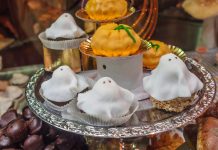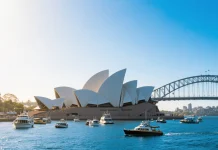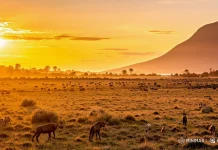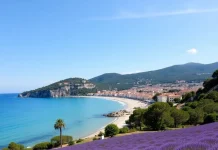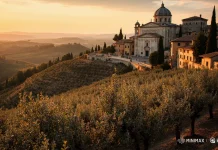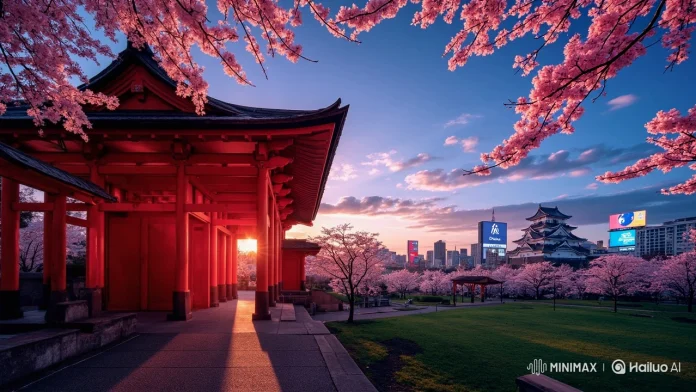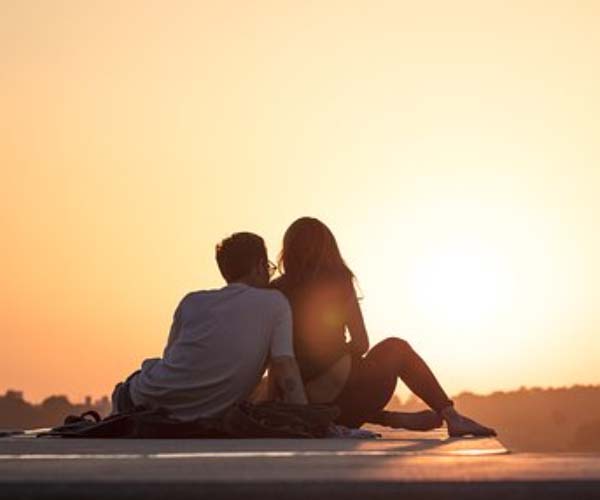A Deep Dive into Kansai, Japan: The Blend of Ancient Kyoto and Dynamic Osaka
**

Sophia had always been captivated by Japanese culture, particularly the ancient allure of Kyoto and the vibrant energy of Osaka. Finally, she set foot in Kansai. However, upon arriving in Kyoto, she was at a loss about where to begin exploring the numerous ancient temples. In Osaka, due to unfamiliarity with the food distribution in Dotonbori, she missed out on many local specialties. In fact, each year, a large number of tourists, just like Sophia, come to Kansai full of anticipation but end up with regrets due to insufficient preparation. Don’t worry. After reading this guide, you’ll easily unlock the charm of Kansai and enjoy an immersive journey between ancient Kyoto and dynamic Osaka.
Why Choose Kansai?
The Kansai region is the cultural heart of Japan. For approximately 1500 years, it served as the capital of Japan for an extended period, amassing profound historical heritage. Kyoto, which was the capital of Japan for a thousand years, has 17 historical sites, such as Kinkaku – ji and Kiyomizu – dera, that are included in the “Cultural Properties of the Ancient Capital of Kyoto”. Wandering around, it feels as if you’re traveling back a thousand years, and you can truly experience the subtlety of Japanese traditional architecture and garden art. Osaka, as a crucial economic and commercial center in Japan, is renowned for its warm and unrestrained urban atmosphere and diverse cuisine. It attracts tens of millions of tourists from around the world annually. Whether you’re a scholar passionate about history and culture, a food enthusiast eager to explore delicious food, or a young person who loves the bustling urban atmosphere, Kansai can meet your travel expectations.
Things to Know Before You Go
Best Time to Visit
- Spring (March – May): Cherry blossoms are in full bloom. Scenic spots like Kiyomizu – dera in Kyoto and Osaka Castle Park in Osaka are surrounded by a sea of pink flowers. It’s an excellent time for cherry – blossom viewing. The temperature ranges from 10 – 20°C, suitable for outdoor strolls. However, there are a large number of tourists, so it’s necessary to plan your itinerary and accommodation in advance.
- Autumn (September – November): The maple leaves gradually turn red. The maple leaves in Arashiyama in Kyoto and the Sakura – michi of Osaka Mint Bureau are picturesque. The climate is cool, with an average temperature of 15 – 25°C, suitable for visiting temples, parks, and other attractions.
- Summer (June – August): The weather is hot and humid, often exceeding 30°C. But festivals like the Tenjin Matsuri in Osaka are extremely lively, with many summer festivals and fireworks displays.
- Winter (December – February): It’s relatively cold, with temperatures ranging from 0 – 5°C. The streets of Kyoto and Osaka are decorated with Christmas and New Year decorations, creating a unique atmosphere. Accommodation prices may be more favorable.
Visa / Entry
Chinese tourists need to apply for a Japanese tourist visa. Prepare materials such as a passport valid for more than 6 months, a visa application form, an employment certificate or student certificate, and bank statements. Apply through a travel agency or a visa – handling agency. It’s recommended to apply 1 – 2 months in advance. When entering the country, fill in the customs declaration form truthfully and strictly prohibit the carrying of prohibited items, such as fresh fruits and meat products.
Transportation Tips
- By Air: Kansai International Airport is the main gateway, with direct flights from many cities in China. After arrival, you can take the Nankai Electric Railway, JR lines to Osaka city, or transfer to buses to cities like Kyoto.
- By Rail: The JR West Japan railway line connects cities in Kansai. There are also private railways such as the Keihan Electric Railway and the Hankyu Railway. Buying a transportation card like the ICOCA card makes traveling more convenient and can also be used for consumption in convenience stores.
- Urban Transportation: Kyoto has a well – developed bus network. In some areas where attractions are concentrated, you can walk or rent a bicycle to visit. The subway network in Osaka is dense and can cover most popular attractions.
Budget Reference
- Accommodation: In Kyoto, a guesthouse costs around \(70 – \)140 per night, such as a traditional machiya guesthouse near Gion. High – end hotels cost over \(210, like the Four Seasons Hotel Kyoto. In Osaka, an economy hotel costs \)55 – \(110, such as hotels in the Namba area. Luxury hotels start from \)170, like the Conrad Osaka.
- Food: Street food stalls, such as takoyaki and okonomiyaki in Osaka, cost \(4 – \)11 per serving. In an ordinary restaurant, the per – capita cost is \(14 – \)28, where you can savor authentic Japanese cuisine. In high – end kaiseki restaurants, the per – capita cost is over $70.
- Transportation: The transportation cost for 7 days (including inter – city and urban transportation) is approximately \(70 – \)110. Overall, the per – capita budget for 7 days is around \(700 – \)1100. If you pursue a luxurious experience, the cost will increase accordingly.
Highlights of the Itinerary
Must – Visit Attractions
- Kinkaku – ji in Kyoto: Its official name is Rokuon – ji. The outer walls are covered with gold leaf, shining brightly in the sun and reflecting beautifully in the Mirror Lake Pond. In the early morning or at dusk, there are relatively fewer tourists. At this time, taking pictures of Kinkaku – ji with soft light can produce extremely beautiful photos.
- Gion in Kyoto: Wandering on the ancient streets of Gion, with stone – paved roads under your feet and traditional wooden buildings on both sides. If you’re lucky, you can encounter geisha in gorgeous kimonos taking small steps. You can enter a traditional tea house, order a cup of matcha, and enjoy a geisha performance to deeply understand geisha culture. Geisha receive strict training from a young age and are proficient in traditional arts such as dance, music, and tea ceremony.
- Kiyomizu – dera in Kyoto: This ancient temple was built in 798. The main hall is supported by giant wooden pillars, like a castle in the air. The vermilion – colored building stands out against the green trees. Looking out from the Kiyomizu Stage, the view of Kyoto city comes into full view. In spring, cherry blossoms are in bloom, and in autumn, maple leaves are like fire. It has a unique charm in different seasons. There are also shrines in the temple for praying for marriage, studies, etc. You may buy an omamori and make a beautiful wish.
- Dotonbori in Osaka: At night, Dotonbori is extremely lively, with neon lights flashing on both sides of the street and giant billboards standing tall, such as the famous Glico running man billboard. It’s a food paradise, with the aroma of okonomiyaki, takoyaki, kushikatsu, and other delicacies filling the air. You can take a boat tour on the Dotonbori Canal to enjoy the bustling night view on both sides from a water perspective.
- Osaka Castle Park in Osaka: Osaka Castle is one of the three most famous castles in Japan. The Osaka Castle Keep in the park is magnificent. Climbing to the top of the keep, you can overlook the panorama of Osaka city. The park is lush with greenery. When cherry blossoms are in bloom in spring, it attracts many tourists to enjoy the blossoms and have picnics, experiencing the beauty of the integration of history and nature.
Hidden – Gem Experiences Loved by Locals
- Philosopher’s Path in Kyoto: Built along the Biwako Canal, it’s about 2 kilometers long. Along the way, there are ancient temples, shrines, and various flowers blooming in different seasons. In the early morning, jogging or taking a walk on this path, listening to the gurgling water, you can feel the tranquility and poetry of Kyoto and encounter an extraordinary daily life in Kyoto.
- Kuromon Market in Osaka: Known as the kitchen of Osaka people, it gathers fresh seafood, local snacks, fruits, and vegetables, etc. Following the locals, taste freshly caught sashimi, sweet fruits, and bargain with the enthusiastic vendors to experience the authentic Osaka street – level life.
Season – Specific Activities
- Spring (in Kyoto): The Jidai Matsuri held at Heian Shrine in Kyoto on May 15. People dress in ancient costumes, reenacting historical scenes from the Heian period to the Meiji Restoration in Japan, like a time – traveling feast.
- Summer (in Osaka): The Tenjin Matsuri in late July is one of the three major festivals in Osaka. There are magnificent boat parades, mikoshi processions, and a spectacular fireworks display at night, extremely lively.
- Autumn (in Kyoto): During the maple – leaf season in Arashiyama, Kyoto, take the Sagano Scenic Railway and shuttle through the sea of red maple leaves. The beautiful scenery outside the window is like a painting, a unique romance in autumn.
- Winter (in Osaka): The light show in Osaka Castle Park decorates the castle like a dream in the cold winter. The colorful lights and the ancient building complement each other, adding a warm atmosphere to the city.
Avoiding Pitfalls
Common Traps
- Food in Kyoto Scenic Areas: Near popular scenic spots in Kyoto, some restaurants may raise prices, and the food quality is average. For example, near Kiyomizu – dera, the price of an ordinary bowl of ramen may be \(3 – \)4 (20 – 30 RMB) more expensive than in the city center, and the taste is not good.
- Shopping in Osaka: In some non – formal shopping places in Osaka, it’s possible to buy counterfeit and shoddy goods. There have been cases where tourists bought so – called “Made in Japan” skin care products in small street shops and later found they were unbranded products.
Alternative Options
- Food in Kyoto: Avoid the main streets of scenic areas and explore the alleys. You can find restaurants with high cost – performance and delicious food. For example, around Kyoto’s Nishiki Market, there are many local small shops offering authentic cuisine at affordable prices.
- Shopping in Osaka: Choose regular shopping malls and drugstores for shopping. Large shopping malls in business districts such as Shinsaibashi and Namba in Osaka guarantee the quality of goods and often launch preferential activities and tax – refund services.
Safety Tips
- Transportation: In Japan, traffic moves on the left. Pay attention to traffic lights and signs when crossing the road. When taking public transportation, take good care of your personal belongings, especially in crowded carriages.
- Scenic Area Visits: In scenic areas such as Kyoto temples and Osaka Castle Park, abide by the scenic area regulations. Do not touch ancient monuments and cultural relics casually. In crowded places, keep a safe distance from others to prevent accidents.
Useful Toolkit
APPs / Websites
- Hyperdia: Query Japanese public transportation transfer information, accurately plan your itinerary, including railway, bus, and other routes and timetables.
- Google Maps: A must – have for navigation. It can locate in real – time, query walking, driving, and public transportation routes, and also search for nearby attractions, restaurants, etc.
- TripAdvisor: Check the real reviews of attractions and restaurants, understand the experiences of other tourists, and facilitate the screening of high – quality places to visit and dine.
- Japan Tax – Free Shopping Assistant: When shopping in Osaka and other places, use this APP to quickly calculate the tax – refund amount and understand the tax – refund process and rules.
Local Contacts
You can obtain local travel information from guesthouse landlords and hotel reception desks. They can provide practical information such as recommended nearby attractions and introductions to local restaurants. Some hotels also have a travel service desk that can help book tickets and arrange itineraries.
Emergency Contacts
- Japanese Police Emergency Number: 110
- Emergency Medical Number: 119
- Local Police Emergency Number: Please check the official information of the destination in time.
- Emergency Medical Number: Usually a universal emergency number (such as 112, 911 in some areas, subject to the local situation).
- Embassy/Consulate of Your Home Country in Japan: Before traveling, please check and save the contact information of your home country’s embassy/consulate in Japan in advance. In case of an emergency, you can seek consular protection and assistance.
- Embassy/Consulate of Your Home Country in Japan: Before traveling, you can use AI tools such as DeepSeek, ChatGPT, Claude, and Tongyi Qianwen to quickly obtain travel guides, attraction introductions, and local food recommendations. Enter keywords such as “Contact Information of the Embassy/Consulate of [Your Country Name] in Japan” for a quick query. After obtaining the information, save it in time. In case of an emergency, you can seek consular protection and assistance immediately.
Kyoto and Osaka in Kansai, one is like a gentle and classical beauty, and the other is like an enthusiastic modern youth. The two interweave a unique charm. Are you already eager to plan your own Kansai trip? Do you want to know more about off – the – beaten – path attractions or special cuisine in Kansai? Welcome to share in the comments section. In the future, we will also launch more in – depth travel guides to Japan, taking you to explore more wonderful destinations.






